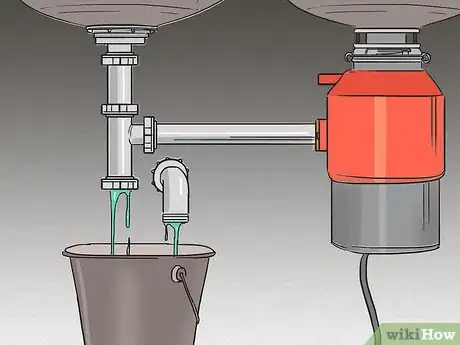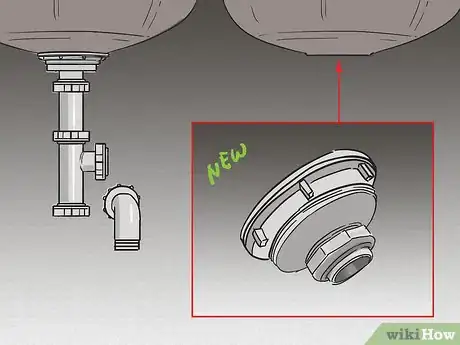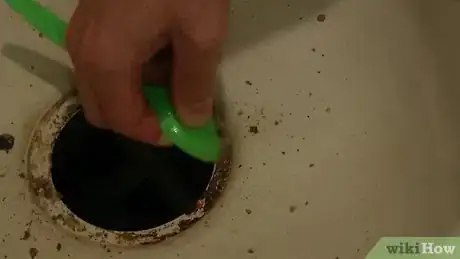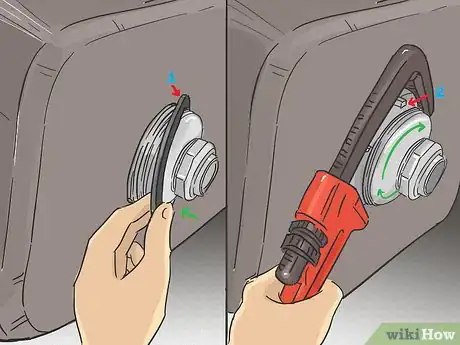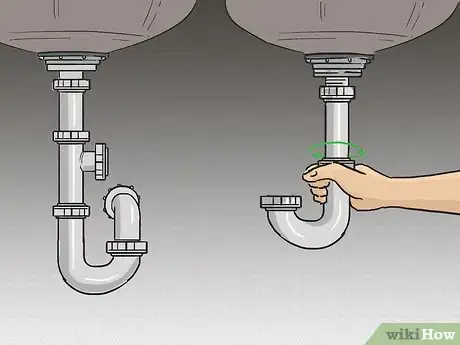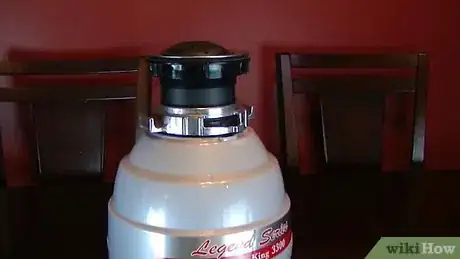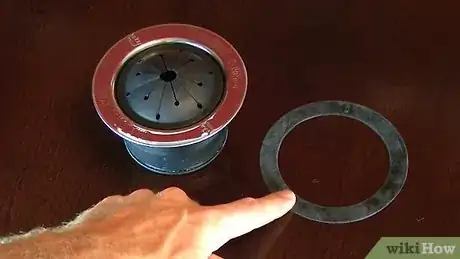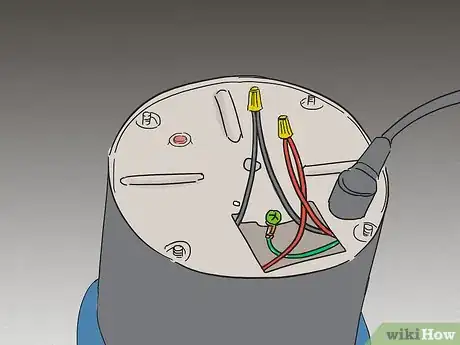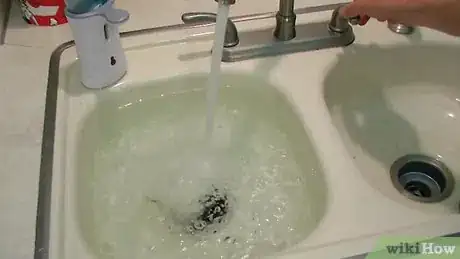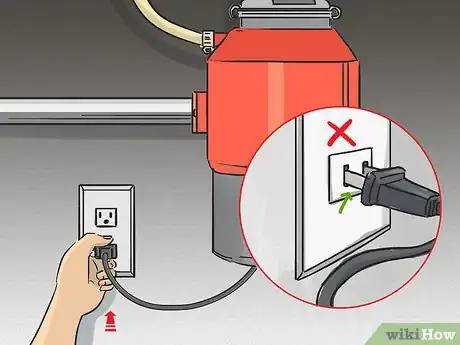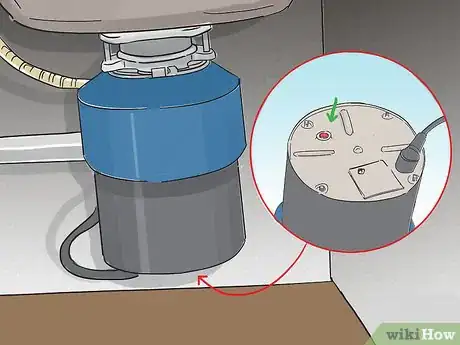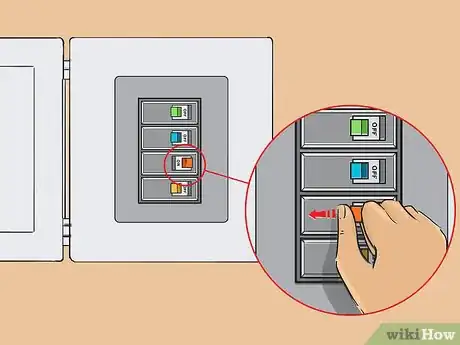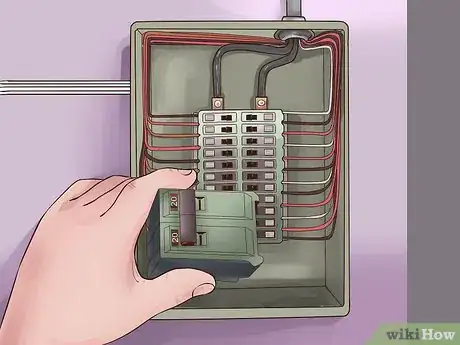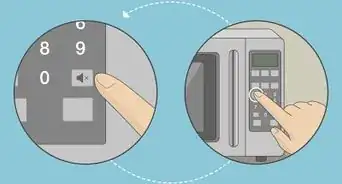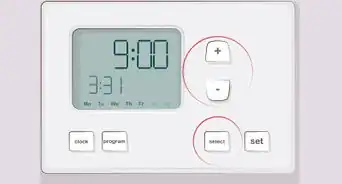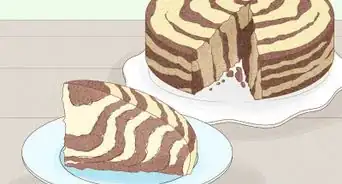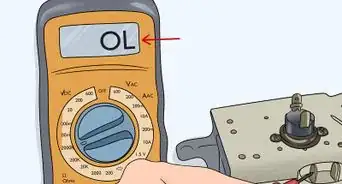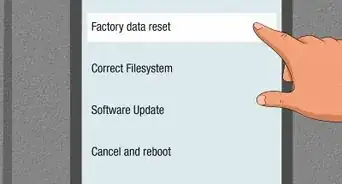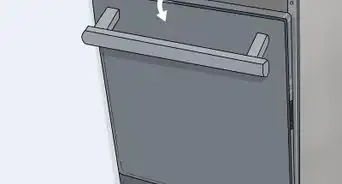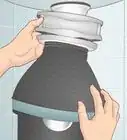This article was co-authored by Patrick Johns. Patrick Johns is a Home Improvement Specialist and the Owner of CatchAll Handyman Services. With more than 28 years of experience, he has worked on a variety of home improvement projects, such as carpentry, plumbing, and door and window installations in both commercial and residential properties.
wikiHow marks an article as reader-approved once it receives enough positive feedback. This article received 17 testimonials and 100% of readers who voted found it helpful, earning it our reader-approved status.
This article has been viewed 486,162 times.
Removing a garbage disposal can be expensive if you hire a plumber. Doing the job yourself will save you money and is a straightforward process. By using a few tools and completing a few steps, you will be able to remove your garbage disposal at minimal cost.
Steps
Removing the Garbage Disposal
-
1Shut off the power supply to the garbage disposal. Shut off the power supply from the circuit breaker or electrical service panel. Flip the switch controlling the electricity going to the garbage disposal on your circuit breaker.
- Confirm that the power supply has been shut off by attempting to turn the garbage disposal on before proceeding.
-
2Unplug the garbage disposal from the wall socket. Unplug the garbage disposal from the wall. If the unit is hardwired into your home then you have to disconnect the wires.
- If the unit is hardwired to the house then you have to use a screwdriver to remove the plate covering the wire connections on the disposal. Disconnect the exposed wires and then remove the plate covering the junction box on the wall. Untwist the wire caps securing the disposal wires to your home wires and set the disposal’s wires on the side. Twist the wire capes over the exposed wires in the junction box, put the wires into the junction box and reattach the junction box plate.
- Use a voltage tester to ensure that there is no electrical voltage before putting the wires back in the junction box.
Advertisement -
3Loosen the hose clamp attaching the dishwasher hose to the barbed dishwasher nipple and remove the hose. Remove the pipe connecting the dishwasher to the side of the garbage disposal. Not all garbage disposals are connected to a dishwasher so this only applies for those that are connected.
-
4Place a bucket under the waste pipe. When you disconnect the pipes there may be liquid leftover in the pipe. Placing a bucket underneath the pipes will catch any wastewater remaining in the pipes.
-
5Use an adjustable wrench, pipe wrench or tongue-in-groove pliers to remove the fittings that are on the p-trap. This is a u-shaped pipe that connects to the garbage disposal and takes the wastewater away from the disposal.
-
6Allow the water in the p-trap to drain into the bucket. Let any remaining water drain out of the pipe and into the bucket.
-
7Remove the garbage disposal. Some models will unscrew from the sink drain while others might have a snap ring. To remove the snap ring insert a flat-head screwdriver under the ring to pry it open and off the flange.
- Make sure to hold the underside of the garbage disposal with your hand while removing. They are very heavy!
- You may want to put rags on the bottom of your cabinet as protection; in case the disposal drops this will protect your cabinet floor from damage.
-
8Detach the mounting assembly. Remove the mounting assembly by first loosening the three mounting screws that hold the upper and lower rings apart. Remove the ring that is in a groove on the sink sleeve and then remove the sink sleeve, flange and fiber gasket.
- Clean out any remaining sealing gaskets, plumber's putty, or debris from the sink opening.
- If you are replacing your disposal with the same disposal then you can leave the mounting assembly.
Replacing the Sink Drain and Installing New Drain Pipes
-
1Use this method if you have removed your garbage disposal and do not wish to install a new one. This will install a new sink drain and connect the drain to the waste pipes, allowing wastewater to drain directly from the sink into the drainpipes.
-
2Remove the nut securing the drain flange to remove the sink drain. Use a pipe wrench to loosen and remove the nut securing the drain flange. Then you can push the sink drain up through the sink for removal.
-
3Clean the putty around the drain hole with a putty knife. Scrape the putty off using the putty knife. If the putty is very hard and difficult to remove then you should use a razor to remove the excess. After cleaning off the chunks of putty use a scrubbing pad and water to scrub the area clean.
- If the putty is too difficult to remove, use rubbing alcohol or spirits to remove the putty.
-
4Roll out a 1/8-inch (3.2 mm) rope of plumber’s putty and place it in the drain. The rope should be long enough to go around the circumference of the drain. Place it on the underside lip of the drain and then set the drain into the sink opening. Press the drain down firmly and wipe away excess putty.
-
5Secure the flat washer to the underside of the drain. The drain will come with a washer when it is purchased. Move to the underside of the drain and place the washer over the threads and secure with the large nut that comes with your drain. Tighten the nut as securely as possible using tongue-and-groove pliers.
- It may help to have someone hold the drain from the top so it does not move around.
- Remove excess putty after securing the drain.
-
6Find the PVC drain tailpiece. This will connect the drain to the elbow pipe. It should be long enough that it is at the same level of the pipe it needs to be connected to. Hand-tighten the tailpiece to the sink drain to secure the piece.
-
7Attach the elbow pipe to the tailpiece. Attach the pieces together to create the bend in the pipe directing towards the adjacent sink.
-
8Connect the connector pipe to the elbow and the adjacent sink. Use the connector pipe to connect the elbow piece to the T-fitting on the adjacent sink. The connector piece might need to be cut down to the correct length depending on your sink. Use the nuts and washers provided with your pipes to secure the pieces together using the tongue-and-groove pliers.[1]
Replacing the Garbage Disposal with a New Disposal
-
1Use this method if you have removed your garbage disposal and want to replace it with a newly purchased garbage disposal. If you are installing a garbage disposal of the same brand then you could keep the mounting bracket on the sink drain rather than removing it.
- Make sure that the water is cut off before you get started.
-
2Place a rubber seal on the underside of the drain flange. The rubber seal will usually come with your new disposal. You can simply wrap it around the flange and then put the drain flange in the drain hole.
- You will need to use putty if your disposal does not include a rubber seal.
-
3Place another rubber seal on the drain flange on the underside of the sink and attach the metal backup ring. Use another of the provided seals on the drain flange on the underside of the sink. Attach the metal backup ring flat side up by pushing over the underside of the drain flange underneath the sink.
-
4Attach the mounting ring. First loosely attach the mounting ring with three screws. Then secure the mounting ring with the snap ring, which snaps into place. Finally tighten the three screws, making sure the assembly is tight and even.
- The mounting bracket is now attached and ready for the new garbage disposal.
-
5Prepare the new disposal. Turn the disposal upside down and shake it to remove anything inside. Remove the electrical plate and pull the wires away from the disposal. Screw the strain relief sleeve into place and feed the electrical wires through it into the disposal.
- If you are connecting the disposal to a dishwasher, then you must remove the knock out plug using a hammer and screwdriver.
-
6Connect the electrical wires. On many disposals you will connect the ground wire to the green screw on the disposal, and then splice the white wires to white wires and black to black. Secure the connections with wire nuts and tighten the strain relief sleeve. Replace the cover plate on the disposal.
-
7Lift the disposal up onto the mounting bracket and lock into place. Lift up the disposal and push it into the mounting bracket. Then turn the locking ring until all three housing pins catch. Tighten the locking ring as far as possible, using slip-joint pliers to finish tightening. You should hear the pins snap into place.
-
8Attach the pipes. You will attach a 90-degree disposal drainpipe to the disposal and the tailpiece to the other sink drain. There should be p-traps on both the disposal and the tailpiece from the other sink and they should be level to one another. Use straight pipes and a T-fitting to connect both drains into one line and route the drainpipes into the main drain.
- Dry fit the pieces together at first.
- Connect the pipes using PVC glue on both the outside of the pipe and inside of the fitting. PVC glue will melt the material a little to give a strong weld.
-
9Connect the dishwasher drain line. If you are running the drain from a dishwasher through the disposal then you must connect the pipe to the disposal at the spot where you knocked out a plug previously.
-
10Turn on the sink to let water through. Turn on the sink and let water run through the pipes for several minutes to make sure nothing is leaking. This can prevent many problems in the future with leaks so make sure you test your pipes.[2]
-
11Turn the power back on. Flip the circuit switch back on at the electrical service panel to power up the disposal. If all works correctly then the installation is finished.
Troubleshooting the Garbage Disposal
-
1Troubleshoot the garbage disposal if it has stopped working. Check to see that your garbage disposal actually needs to be replaced. If the disposal is not making a humming noise then the problem may simply be electrical and can be checked.
- If it makes a humming sound but does not work, then it may be stuck or need the sub-breaker reset.
-
2Make sure the disposal is plugged in. While this may seem obvious, make sure that your disposal is plugged in properly.
-
3Press the rest button on the bottom of the disposal. This resets the garbage disposal and will pop out if it has reset. It will make a click as it goes back in.
-
4Check the outlet circuit breaker. Check to see that the circuit breaker has not tripped and turned off in the electrical service panel or breaker box. All the switches should be fully on at the fuse box.
-
5Replace the circuit breaker switch. If nothing else has worked then either there is a faulty switch or a faulty garbage disposal. Replace the switch to test if that is the problem by first turning off the circuit breaker at the service panel. Then replace the switch and turn power back on at the service panel.
- If none of these steps is effective, then the disposal will have to be replaced.
Community Q&A
-
QuestionWhy does water leak from the bottom of the disposal?
 Community AnswerIf the source is not a connection from above then your disposal needs to be replaced. Try cupping your hands around the very top under the sink while running water. The ring that seals the gasket turns clockwise to tighten. The only other repairable leak would be where the piping comes out the side. There can also be a smaller dishwasher drain hose above that.
Community AnswerIf the source is not a connection from above then your disposal needs to be replaced. Try cupping your hands around the very top under the sink while running water. The ring that seals the gasket turns clockwise to tighten. The only other repairable leak would be where the piping comes out the side. There can also be a smaller dishwasher drain hose above that. -
QuestionCan I remove a garbage disposal and add a hose that goes to the sewer in its place?
 Community AnswerYou need to replace it with a strainer basket assembly, tailpipe and additional piping to meet up with the existing piping. The trap or U bend is essential to prevent sewer gas from backing up into your home.
Community AnswerYou need to replace it with a strainer basket assembly, tailpipe and additional piping to meet up with the existing piping. The trap or U bend is essential to prevent sewer gas from backing up into your home. -
QuestionWhere do I attach the dishwasher hose once I have removed the garbage disposal? Does it have to be fed just before the pipe goes into the wall?
 Community AnswerNo, there are special tailpipes with a fitting for this. Bypassing the trap can allow sewer gas into your home.
Community AnswerNo, there are special tailpipes with a fitting for this. Bypassing the trap can allow sewer gas into your home.
Warnings
- Never put your hand down the drain into the disposal! This is very dangerous.⧼thumbs_response⧽
Things You'll Need
- Pipe wrench, adjustable wrench, or tongue and groove pliers
- Bucket
- Screwdriver
- Putty knife
- Plastic scouring pad
- Drain pipe, elbow piece and connector pipe
References
About This Article
To remove a garbage disposal, first flip the breaker on the fuse box for your garbage disposal and unplug it from the wall to cut off the electricity. Then, turn the water off under your sink by turning the handles on the supply lines all the way to the left. Place a paint tray or deep baking sheet under your disposal to catch any water that spills out. Next, unscrew the nut that connects you pipe to the trap where waste is shredded. Turn this nut by hand, or use channel locks to loosen it. Once the nut is loose, slide the pipe out of the garbage disposal. If you have a dishwasher line running to the trap, use a flathead screwdriver to loosen the collar-clamp securing the line to the trap. Pull the dishwasher line out and empty it into your paint tray or sheet pan. With your pipe and dishwasher line disconnected, inspect the top of the trap where it connects to your sink. Look for a hook or loop sticking out of the metal piece that connects the sink to the garbage disposal. Use your thumb to carefully slide this hook to the left. If you cannot move the hook, get a hex wrench and insert the short end into the opening of the hook. Use the hex wrench to push the hook to the left. Keep one hand under the garbage disposal while you’re doing this because the hook is the only piece keeping your disposal attached to the sink. Once you’ve slid the hook all the way to the left, the garbage disposal will pop right off and you can discard or recycle it. To learn how to install a new garbage disposal, scroll down!


